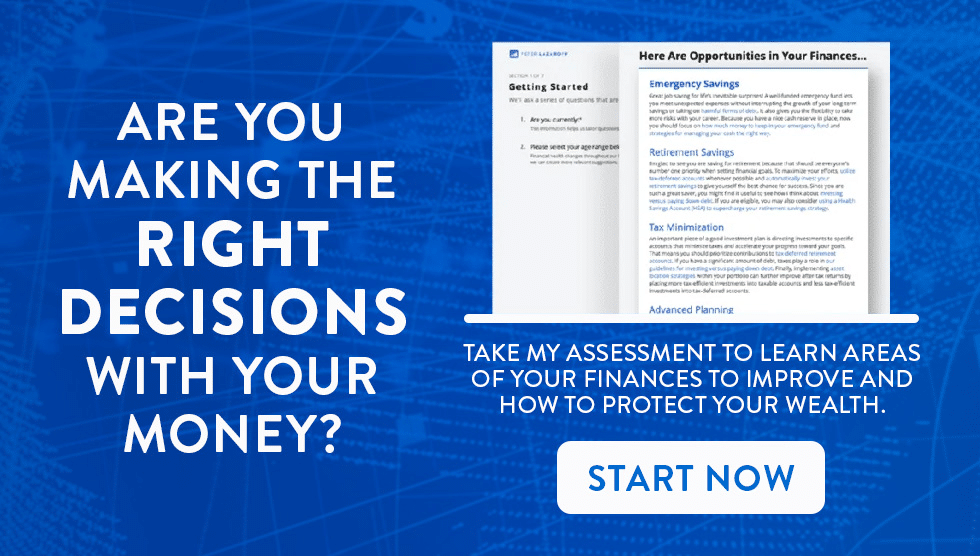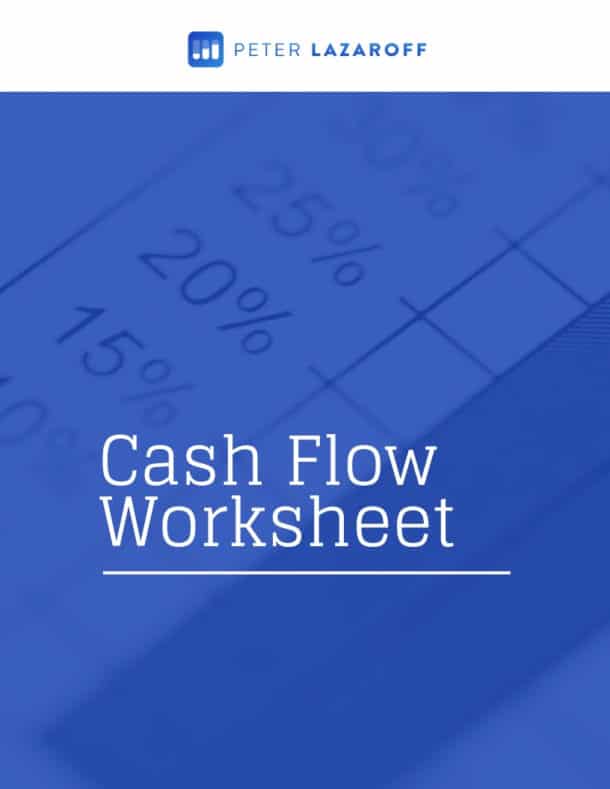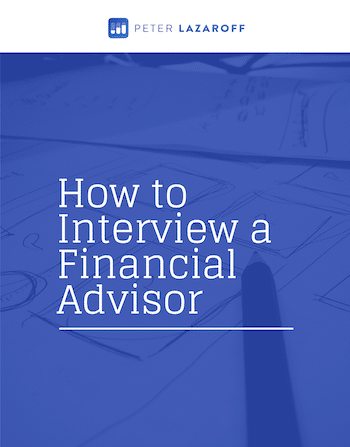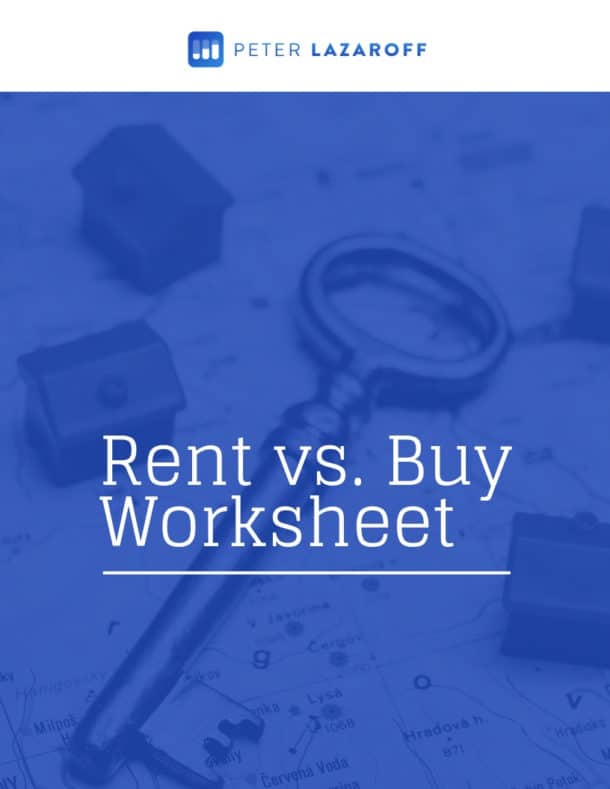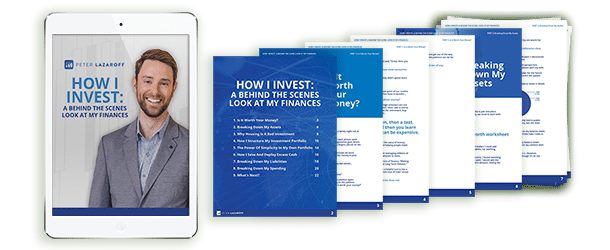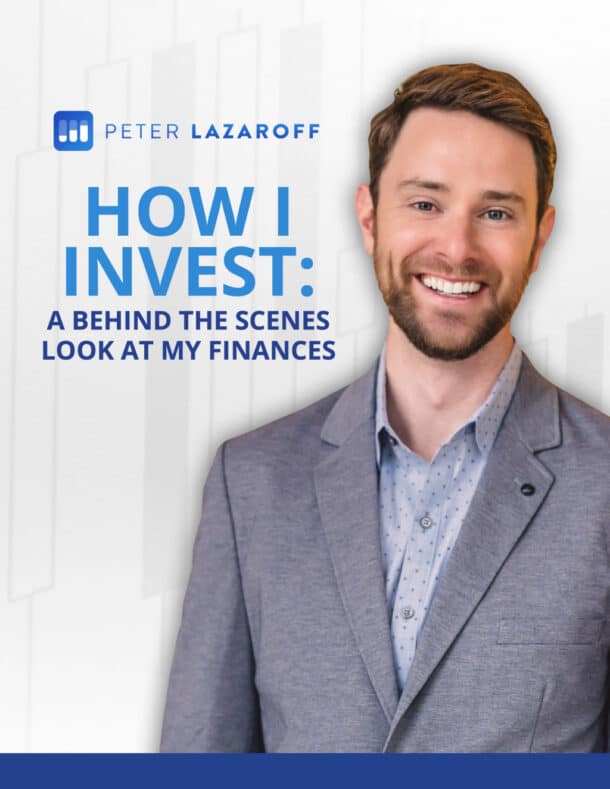Watch Now
Listen Now
In this episode, I’m thrilled to bring you a conversation with one of the sharpest minds in the world of quantitative investing—Wes Gray.
Wes is the CEO, chief investment officer, and founder of Alpha Architect. He is also an accomplished researcher and writer (see: Quantitative Value and Quantitative Momentum). Wes’ path into finance began at the University of Chicago, where he earned his MBA and Ph.D. and studied under Nobel Prize winner Eugene Fama. Prior to that, Wes served as a captain in the United States Marine Corps.
In this episode, we dive into a wide range of topics, including the challenges of active investing, the nuances of factor investing, and why value investing has struggled over the past decade. Wes also shares his candid views on emerging markets and private equity, providing insights that every long-term investor should consider.
Here are the notes from my conversation…
Sign up for my newsletter so you can easily reply to my emails with your thoughts or questions for the podcast:
From Stock Picker to Quant: Wes Gray’s Investing Journey [0:30]
Wes’s story is one that many of us in the investment community can relate to, especially those of us who started out with a passion for stock picking and a deep admiration for legends like Warren Buffett and Benjamin Graham.
Wes began his career as a die-hard value investor, focused on identifying undervalued stocks through meticulous analysis. A huge fan of Warren Buffett and Ben Graham, Wes had some early successes that reinforced his belief in stock picking as the ultimate path to investment success.
But as Wes’s career progressed, he started to see cracks in the stock-picking facade. After nearly a decade of success, he entered the PhD program at the University of Chicago, where he studied under the legendary Professor Eugene Fama. This is where Wes’s perspective began to shift dramatically.
He embarked on an intense research project that involved reading and analyzing around 4,000 stock pitches with the goal of proving that stock pickers could add value. However, through this research, Wes discovered something unexpected: much of what these stock pickers were doing could be replicated—or even improved—by systematic, quantitative strategies.
Wes shared with me that this realization was a turning point in his career. He realized that while he had considered himself a brilliant stock picker, the truth was that many of the same outcomes could be achieved with less effort, less stress, and arguably more consistency through quantitative methods. This led him to a profound decision—he would never pick a stock again without the involvement of a computer.
Wes’s transition from a traditional stock picker to a quant was not just about adopting new tools; it was about embracing a completely different mindset. He moved away from the idea that individual stock picking was the key to success and instead focused on building systematic strategies that could exploit market inefficiencies in a more reliable and repeatable way. This shift wasn’t easy, and it involved a lot of unlearning and rethinking about what it means to be a successful investor.
I found Wes’s journey particularly resonant because it’s a path that challenges the conventional wisdom many of us grew up with. Like Wes, I started my career as a stock analyst, believing that through hard work and deep analysis, I could consistently find those hidden gems in the market.
But the more I learned, especially through the financial crisis of 2007-2008, the more I realized the limitations of this approach. The crisis was a humbling experience, one that forced me to rethink my own investment philosophy and ultimately led me toward a more rules-based, systematic approach—much like Wes.
What stands out to me about Wes’s story is not just the intellectual journey, but the practical and emotional one as well. Moving from a hands-on, gut-driven approach to a data-driven, systematic one is a big leap, especially for those of us who take pride in our analytical skills and judgment. But as Wes has shown through his career, sometimes the best way to achieve long-term success is to let go of the need to control every decision and instead rely on systems that can do the heavy lifting for us, free from the biases and emotions that can cloud our judgment.
The Efficient Market Hypothesis and the Reality of Active Investing [8:39]
Efficient Market Hypothesis (EMH) is a cornerstone of modern financial theory. For those unfamiliar, EMH suggests that stock prices at any given time reflect all available information. The implication here is significant: if markets are truly efficient, then consistently outperforming the market through active stock picking or market timing is nearly impossible.
The weak form of EMH states that you can’t use past price data alone to predict future price movements—essentially debunking the idea that technical analysis can reliably beat the market. The semi-strong form goes a step further, suggesting that even if you have access to all public information, including financial statements and news releases, you still can’t consistently outperform the market. Finally, the strong form of EMH claims that even insider information won’t help you gain an edge, though most agree this is a bit of a stretch.
If you reject the idea that markets are efficient to the point that someone can’t consistently outperform or exploit price inefficiencies, then consider a fascinating thought experiment from Wes’ paper: Even God Would Get Fired as an Active Investor.
Imagine if you had a perfect algorithm—one that could predict the highest-returning stocks over the next five years. You’d think such an algorithm would be unstoppable, right? And sure, over the long haul, this “God portfolio” would indeed crush the market, turning you into a multi-billionaire. But here’s the kicker: even this perfect portfolio wouldn’t be immune to massive drawdowns, often mirroring the market’s most gut-wrenching declines.
Wes explained that during market crashes, the God portfolio could still lose 80% of its value, which is hardly different from what the broader market might lose in the same period. What’s more, there would be stretches of time where this supposedly perfect strategy could even underperform the market itself.
So, even if you knew with 100% certainty which stocks would outperform over the next five years, sticking with that portfolio would be no easy task. You’d face the same emotional and psychological challenges that every investor grapples with—doubting your strategy during tough times, questioning whether you should pivot, and dealing with the pressure from clients or your own second-guessing.
This thought experiment underscores the reality that even if you could pick the best stocks perfectly, maintaining the discipline to stick with the strategy during inevitable downturns would be incredibly challenging.
The moment your portfolio looks different from the benchmark—when it underperforms during those rough patches—you start to question everything. And that’s exactly when most investors lose their nerve and make poor decisions.
Factor Investing Explained [12:29]
Wes and I took some time to really dive into factor investing, which is about systematically targeting specific characteristics, or “factors,” that have been shown to drive returns over time.
Wes compared it to the “Moneyball” approach in baseball. Just like how Billy Beane used data to identify undervalued players who could contribute to the team’s success, factor investing uses data to identify stocks with certain traits that are likely to outperform. Instead of relying on gut feelings or traditional stock-picking methods, factor investing is all about harnessing the power of data to make more informed decisions.
There are several different factors that can be explicitly targeted in a portfolio to increase expected returns. These will make your portfolio look different from a benchmark, so it’s important to understand the factor you’re targeting and have reasonable expectations for how it will impact your performance.
Take the value factor. In a traditional sense, value investing might mean looking for stocks that appear cheap based on fundamental metrics like price-to-earnings or price-to-book ratios. But in the world of factor investing, it’s more about systematically applying this value filter across a large universe of stocks, rather than picking just a few “undervalued” ones based on subjective analysis. The idea is to create a portfolio of stocks that are cheap relative to their fundamentals, but without getting emotionally attached to any one stock.
Another factor we discuss is momentum, which focuses on stocks that have been performing well in recent months. The idea here is that stocks that are going up tend to keep going up, at least for a while. It’s almost the opposite of value investing, which often focuses on stocks that have been beaten down. But the beauty of factor investing is that you don’t have to choose one over the other—you can build a portfolio that includes both, and let them complement each other.
Wes and I also touched on other factors like quality—which targets companies with strong balance sheets, stable earnings, and good management—and size, where smaller companies are often seen as offering higher potential returns (albeit with higher risk). There’s also low volatility, which favors stocks that are less prone to big price swings, and profitability, which focuses on companies that generate strong profits relative to their size.
The key takeaway from our discussion is that factor investing allows you to systematically exploit these different drivers of return, without getting caught up in the emotional rollercoaster of stock picking. It’s about letting the data guide your decisions, building a diversified portfolio that captures the best of these different strategies, and staying disciplined through the ups and downs.
And importantly, it’s about understanding that no single factor will outperform all the time—much like how no baseball player hits a home run every time they step up to the plate. But over the long run, these factors have been shown to add value, especially when combined in a thoughtful, diversified way.
By using a systematic, data-driven approach, factor investing helps investors avoid the pitfalls of emotional decision-making and the biases that can come with traditional stock picking. It’s a powerful way to enhance returns and manage risk, all while staying true to a disciplined, rules-based investment philosophy.
Why Value Has Struggled [19:31]
For those of us who have long believed in the principles of value investing—buying stocks that are cheap relative to their fundamentals—the last decade has been humbling, to say the least. But understanding why value has struggled is crucial for maintaining confidence in this strategy.
Wes and I started by acknowledging the basic premise of value investing: it’s about buying stocks that are undervalued by the market. The expectation is that these stocks are riskier—often because they’re in industries facing challenges, or they have issues that make them less attractive to most investors. The idea is that, over time, the market will recognize the true value of these stocks, and their prices will rise, delivering strong returns to those who had the foresight (and the stomach) to buy them when they were cheap.
However, as Wes pointed out, value investing is inherently cyclical. There will be times when value stocks underperform the broader market, sometimes for extended periods. The past decade has been one of those times. Growth stocks, particularly those in the technology sector, have dominated the market. Companies like Amazon, Apple, and Microsoft have seen their valuations soar, often trading at multiples that would make any traditional value investor cringe. Meanwhile, many value stocks have languished, leading to a significant performance gap between growth and value.
Wes emphasized that this underperformance isn’t a flaw in the value investing strategy itself. Instead, it’s a reflection of the market’s behavior over this specific period. Growth stocks have benefited from several tailwinds, including low interest rates, technological innovation, and investor enthusiasm for future earnings potential. These factors have driven growth stocks to outperform, while value stocks, which typically represent more mature, slower-growing companies, have been left behind.
But this doesn’t mean value investing is dead. Far from it. As Wes notes, the very nature of value investing means that it won’t always be in favor. In fact, periods of underperformance are often when value strategies set the stage for future outperformance. Historically, value has gone through similar rough patches, only to bounce back strongly when market conditions shift. The challenge, of course, is that these cycles are unpredictable, and it’s tough to stick with a value strategy when it feels like you’re missing out on the gains being made elsewhere.
Wes also pointed out that, from a behavioral standpoint, value investing can be particularly challenging. It requires patience, discipline, and a strong conviction in the underlying principles, especially during times when it feels like everything else is working better. Many investors give up on value at precisely the wrong time, just as the tide is about to turn. This is where understanding the long-term nature of investing and staying the course becomes so important.
So, why has value investing struggled? It’s a combination of cyclical factors, market dynamics, and the specific environment of the last decade, which has favored growth over value. But if history is any guide, this cycle won’t last forever. For those of us committed to a value-oriented approach, it’s crucial to remember that these periods of underperformance are part of the journey. Staying disciplined, avoiding the temptation to chase what’s currently working, and trusting in the time-tested principles of value investing are what will ultimately lead to success over the long haul.
The Role of Momentum in a Portfolio [29:54]
Wes explains that the concept of momentum investing, at first glance, might seem counterintuitive to those of us who have been trained in traditional value investing. But momentum is a powerful force in the markets, and understanding its role in a portfolio can significantly enhance our investment strategy.
Momentum investing is, in essence, about buying winners. It’s based on the observation that stocks that have performed well in the recent past tend to continue performing well in the near future. This isn’t just a random anomaly—it’s a phenomenon that has been extensively researched and documented across various markets and asset classes.
Momentum captures what we might call the “greed” aspect of market behavior. When stocks are going up, they often attract more attention, more buyers, and thus, they continue to go up. It’s the same psychology that drives bubbles, but in the context of a systematic, disciplined strategy, momentum investing doesn’t have to be about chasing bubbles—it’s about harnessing this natural market behavior in a controlled way.
Now, if you’re a value investor at heart, the idea of buying stocks that have already gone up might feel uncomfortable. But here’s where the power of diversification comes into play: by combining momentum with value, you can build a more robust portfolio.
Wes explained that momentum and value are, in many ways, complementary. Value investing is about buying “fear,” or stocks that are out of favor and priced cheaply. Momentum, on the other hand, is about buying “greed,” or stocks that are in favor and on the rise. These two strategies often perform well at different times. When value is struggling, momentum might be thriving, and vice versa. By incorporating both into a portfolio, you’re not just hedging your bets—you’re strategically positioning yourself to benefit from different market environments.
To be clear, momentum isn’t about trying to time the market. It’s not about jumping on a hot trend at the last minute. Instead, it’s a systematic approach that relies on historical price data to identify which stocks are currently in an upward trend. The strategy then systematically buys these stocks, holding them for a set period before reassessing the market to see which ones continue to show strength. It’s disciplined, data-driven, and, importantly, emotion-free.
Wes reminds us that momentum investing requires a level of patience and discipline, similar to value investing. There will be times when momentum underperforms, just as there are times when value underperforms. But by combining these strategies, you create a portfolio that can weather different market conditions more effectively.
A Critical Look at Emerging Markets and Private Equity [33:36]
Much of our conversation has centered around adding exposures, namely factor exposures, that make a portfolio look different than a simple index benchmark. A lot of the conversation around adding or not adding an exposure to a portfolio applies to broad asset classes like emerging markets and private equity. Wes provided a refreshingly candid and critical perspective on both, challenging some of the conventional wisdom that surrounds these asset classes.
For years, emerging markets have been promoted as a way to achieve diversification and potentially higher returns. The idea is that by investing in economies that are still developing, you can tap into their growth potential. On the surface, this makes sense—these markets are growing rapidly, and in theory, their equities should offer attractive returns. But Wes raised some important points that make you think twice about this narrative.
First, it’s crucial to remember that emerging markets equities are still equities. When the global market experiences a downturn, emerging markets don’t necessarily provide the kind of diversification benefit that many investors expect. In fact, these markets often suffer even more during crises. They are typically more volatile and can be more closely tied to the economic performance of developed markets than many realize. So, in a market crash, don’t expect emerging markets to provide a safe haven—they might actually exacerbate the pain in your portfolio.
Wes also pointed out that the costs associated with investing in emerging markets are often higher than those of developed markets. Emerging markets funds tend to have higher expense ratios, and the trading costs can be significant due to factors like lower liquidity and higher volatility. Add to that the potential tax implications, and suddenly, the case for emerging markets becomes less compelling. When you strip away the buzzwords and look at the hard numbers, the benefits of including emerging markets in a diversified portfolio start to look marginal at best.
Next, we turned our attention to private equity. Private equity has gained a lot of attention as a way to access returns that aren’t available in the public markets. The appeal is clear—private equity funds invest in companies before they go public or help take companies private, theoretically allowing investors to capture growth that isn’t reflected in public markets. But Wes didn’t mince words when he described the current state of the private equity industry.
He argued that private equity has become the new “2 and 20” fee structure scheme, similar to what we saw with hedge funds in the early 2000s. Back then, hedge funds had their moment in the sun—delivering outsized returns and attracting massive inflows of capital. But as more and more money poured into hedge funds, the returns started to diminish. Too much capital was chasing too few opportunities, and the edge that hedge funds once had began to erode. Wes sees a similar pattern unfolding in private equity today.
The sheer volume of capital flowing into private equity has driven up valuations, meaning that private equity firms are often paying just as much—if not more—for companies than they would in the public markets. This negates one of the primary advantages of private equity, which was to buy companies at a discount. With higher prices, the expected returns naturally decrease. On top of that, the fees in private equity remain extraordinarily high, with the typical 2% management fee and 20% performance fee structure eating into whatever returns are left.
Wes also highlighted the behavioral risks associated with private equity. One of the selling points of private equity is the perceived stability of returns—since these investments aren’t marked to market daily, they appear to be less volatile. But this can create a false sense of security. Investors might believe that their private equity investments are safer than they really are, simply because they don’t see the same daily price fluctuations that they would with public equities. This illusion of stability can lead to complacency, and when the inevitable downturn comes, investors might find themselves facing losses they weren’t prepared for.
Another major concern with private equity is liquidity—or rather, the lack of it. Unlike public equities, which you can sell with the click of a button, private equity investments are typically locked up for years. This can be a serious problem when market conditions deteriorate, and you need to access your capital. Wes warned that in times of financial stress, the liquidity premium—or the ability to sell your investments easily—becomes incredibly valuable. In a crisis, you might find that your private equity investments are worth far less than you thought, or worse, that you can’t sell them at all without taking a significant loss.
Ultimately, Wes and I both agreed that while emerging markets and private equity can have a place in certain portfolios, they shouldn’t be added without a critical eye. Investors need to be fully aware of the costs, risks, and potential downsides before jumping into these asset classes. The allure of high returns shouldn’t blind us to the realities of what we’re investing in. By approaching these opportunities with caution and a clear understanding of the trade-offs involved, we can make more informed decisions that align with our long-term investment goals.
Resources:
- Alpha Architect
- Wes’s books: Quantitative Value and Quantitative Momentum
- Wes’s Paper: Even God Would Get Fired as an Active Investor
The Long Term Investor audio is edited by the team at The Podcast Consultant
Submit Your Question For the Podcast
Do you have a financial or investing question you want answered? Submit your question through the “Ask Me Anything” form at the bottom of my podcast page.
Support the Show
Thank you for being a listener to The Long Term Investor Podcast. If you’d like to help spread the word and help other listeners find the show, please click here to leave a review.
I read every single one and appreciate you taking the time to let me know what you think.
Free Financial Assessment
Do you want to make smart decisions with your money? Discover your biggest opportunities in just a few questions with my Financial Wellness Assessment.
